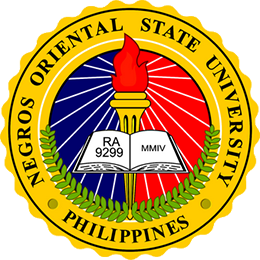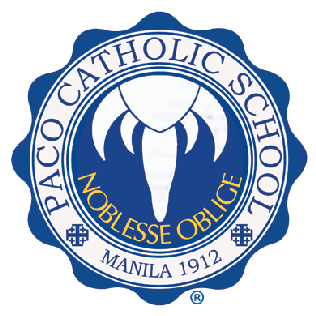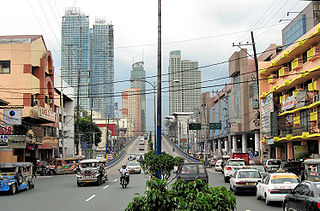
Metropolitan Manila, formally the National Capital Region and commonly called Metro Manila, is the capital region and largest metropolitan area of the Philippines. The region is located on the eastern shore of Manila Bay, between the Central Luzon and Calabarzon regions. It consists of 16 highly urbanized cities: the City of Manila, Caloocan, Las Piñas, Makati, Malabon, Mandaluyong, Marikina, Muntinlupa, Navotas, Parañaque, Pasay, Pasig, Quezon City, San Juan, Taguig, and Valenzuela, and one municipality: Pateros. The region encompasses an area of 619.57 square kilometers (239.22 sq mi) and a population of 13,484,462 as of 2020. It is the second most populous and the most densely populated region in the Philippines. It is also the 9th most populous metropolitan area in Asia and the 5th most populous urban area in the world.

Rizal, officially the Province of Rizal, is a province in the Philippines located in the Calabarzon region in Luzon. Its capital is the city of Antipolo. It is about 16 kilometres (9.9 mi) east of Manila. The province is named after José Rizal, one of the main national heroes of the Philippines. It is bordered by Metro Manila to the west, Bulacan to the north, Quezon to the east and Laguna to the southeast. The province also lies on the northern shores of Laguna de Bay, the largest lake in the country. Rizal is a mountainous province perched on the western slopes of the southern portion of the Sierra Madre mountain range.

The Ateneo de Manila University, simply Ateneo de Manila or Ateneo, is a private, research, basic and higher education institution in Quezon City, Philippines. Founded in 1859 by the Jesuits, it is the second-oldest Jesuit-administered institution of higher learning in the Asia-Pacific.

Pasig, officially the City of Pasig, is a highly urbanized city in the National Capital Region of the Philippines. According to the 2020 census, it has a population of 803,159 people.

Taguig, officially the City of Taguig, is a 1st class highly urbanized city in Metro Manila, Philippines. According to the 2020 census, it has a population of 886,722 people. Located in the northwestern shores of Laguna de Bay, the city is known for Bonifacio Global City, one of the leading financial centers of the Philippines. Originally a fishing village during the Spanish and American colonial periods, it experienced rapid growth when former military reservations were converted by the Bases Conversion and Development Authority (BCDA) into mixed-use planned communities. Taguig became a highly urbanized city with the passage of Republic Act No. 8487 in 2004.

Antipolo, officially the City of Antipolo, is a 1st class component city and capital of the province of Rizal, Philippines. According to the 2020 census, it has a population of 887,399 people. It is the most populous city in the Calabarzon region, and the seventh most-populous city in the Philippines.

Cainta, officially the Municipality of Cainta, is a 1st class municipality in the province of Rizal, Philippines. According to the 2020 census, it has a population of 376,933 people.

Negros Oriental State University is a public/state nonsectarian higher education institution in Dumaguete, Philippines. It was founded in 2004 by virtue of RA 9299. It is the only state university in the province of Negros Oriental, Philippines. Its Main Campus is located in Dumaguete and has the most number of academic programs and student organizations. It also has 6 satellite campuses all over the province. Formerly Central Visayas Polytechnic College, it was converted into a state university for students from Visayas and Mindanao.

Paco Catholic School is a co-institutional private school. The school is located in the district of Paco in the City of Manila, Philippines. Paco Catholic school started in 1912 as an informal class for a handful of young boys inside the chapel in the Peñafrancia section of the district by Raymond Esquenet. It is the largest parochial school in the Philippines and now serving approximately 5,000 students.

Negros Occidental High School is a public secondary educational institution and oldest public secondary school in the province located in Bacolod, Negros Occidental, in the Philippines that was founded since 1902. The school currently offers various curriculum: Special Program in Science Technology, Engineering and Mathematics (STEM) for the Special Science Class, Basic Education Curriculum for the Regular Class, Special Program for the Arts, Special Program in Journalism, Special Class in Culture and Sports and the Basic Education Curriculum for the Night Class. The Negros Occidental High School had an Extension campus in Murcia, Negros Occidental and later on changed its name to Murcia National High School

The Ynares Center is an indoor sporting arena located along the Circumferential Road in Antipolo, Rizal, Philippines. The facility, which has a seating capacity of 7,400, is managed by the Provincial Government of Rizal. Aside from hosting basketball, boxing, volleyball and other indoor sports, the Ynares Center is also used for concerts and other crowd gatherings.
Rizal Technological University (RTU) is a state university located at Mandaluyong, Philippines. It was established on July 11, 1969, as the College of Rizal, part of the University of Rizal System before it became autonomous in 1975. The state university is also the first educational institution in the country to use cooperative education as a curriculum plan which is recognized by various industries, businesses and agencies all over the country. The university has various different academic fields, and focuses primarily on architecture, engineering, and technology programs.

Florentino Torres High School, commonly known as Torres High School (THS), is located in Gagalangin, Tondo, Manila, Philippines. It is one of the oldest public schools in Metro Manila.

Roxas Boulevard is a popular waterfront promenade in Metro Manila in the Philippines. The boulevard, which runs along the shores of Manila Bay, is well known for its sunsets and stretch of coconut trees. The divided roadway has become a trademark of Philippine tourism, famed for its yacht club, hotels, restaurants, commercial buildings and parks.

Francisco P. Felix Memorial National High School is a secondary public high school located at Municipal Compound, Brgy. Sto. Domingo, Cainta, Rizal, Philippines. The school was founded in 1973 and is recognized as the "Division Leader School" in Rizal.
Cecilio Kapirig Putong was a Filipino scholar, educator, writer, UNESCO fellow, author. In 1952, he became the Secretary of Education of the Philippines. He was one of the most brilliant minds from Bohol having a reported IQ of 138 based on Otis Intelligence Scale Test.

Ortigas Avenue is a 12.1 km (7.5 mi) highway running from eastern Metro Manila to western Rizal in the Philippines. It is one of the busiest highways in Metro Manila, serving as the main thoroughfare of the metro's east–west corridor, catering mainly to the traffic to and from Rizal.

Shaw Boulevard is a 4-8 lane highway connecting the cities of Mandaluyong and Pasig in the Philippines. The boulevard is named after William James Shaw, the founder of the Wack Wack Golf and Country Club in Mandaluyong. The road is one of the major thoroughfares of the Ortigas Center in Mandaluyong and Pasig, housing many shopping malls like the Starmall shopping center and the posh Shangri-La Plaza at the EDSA-Shaw intersection and The Marketplace, which is visible from the Kalentong-Shaw intersection and Sevilla Bridge.

Manggahan High School, formerly known as Rizal High School Annex-Manggahan and mistakenly known as Manggahan National High School, is a public high school in Karangalan Village, Brgy. Manggahan, Pasig.

Mariano Concepción Melendres Sr. was a Filipino politician who served as the Governor of Rizal from 1913 to 1916. Later on, he would then serve as the representative of the Second District of Rizal from 1919 to 1925.





















